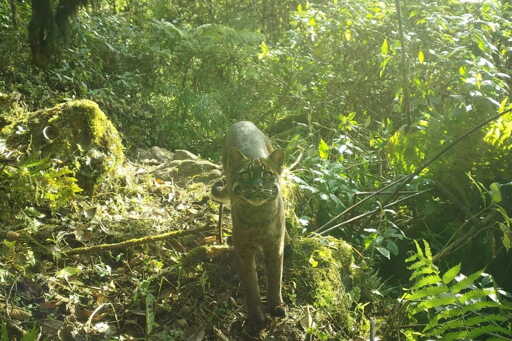A single camera trap image of an Asian golden cat, photographed in Nepal’s Jajarkot district, has expanded this felid species’ range westward by nearly 400 kilometers (248 miles). Out of nearly 60,000 camera trap images snapped in 2024 in the district, this elusive cat showed itself just once. It’s likely, says Badri Baral, program coordinator with Nature Conservation Initiative Nepal, that more Asian golden cats could be found between Jajarkot and the Gaurishankar Conservation Area, an area until recently believed to mark the felid’s farthest westward distribution. This positive news about the elusive wildcat, which dwells in forests across South and Southeast Asia, comes at nearly the same time as bad news, as its IUCN status went from near threatened to vulnerable. A single camera trap image of an Asian golden cat from Jajarkot, has extended its range by nearly 400 kilometers westward in Nepal. Image courtesy of Badri Baral/NCI-Nepal. Researchers say the Asian golden cat (Catopuma temminckii) was likely once abundant across its range. That’s not the case today, with numbers thinned and populations lost due to an excess of threats including deforestation, snaring, and retaliatory killings. Those risks, along with more accurate occurrence and population data featured in IUCN’s 2023 species assessment, are behind the revised threat status. The shift to vulnerable “represents a genuine concern,” says Thomas Gray, Tiger Landscape and Recovery Lead with the WWF Tigers Alive Initiative, who was part of the assessment team. The new IUCN listing also highlights the challenges of assigning a…This article was originally published on Mongabay
From Conservation news via this RSS feed


